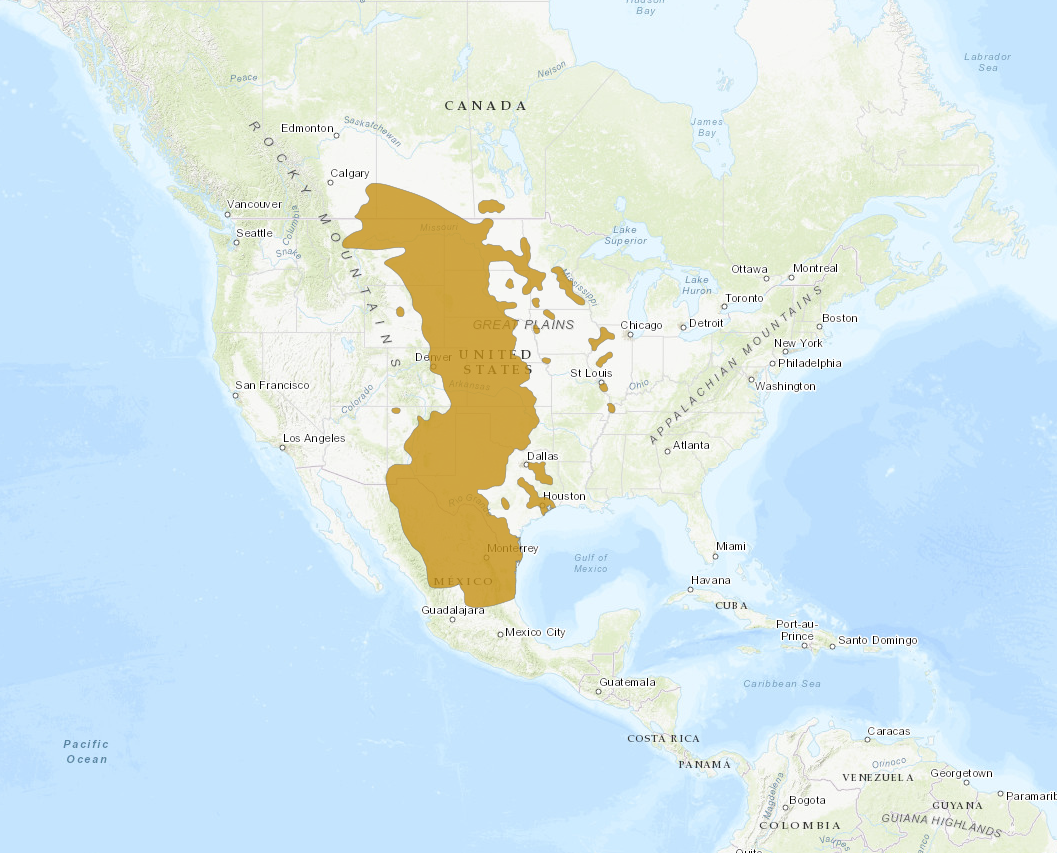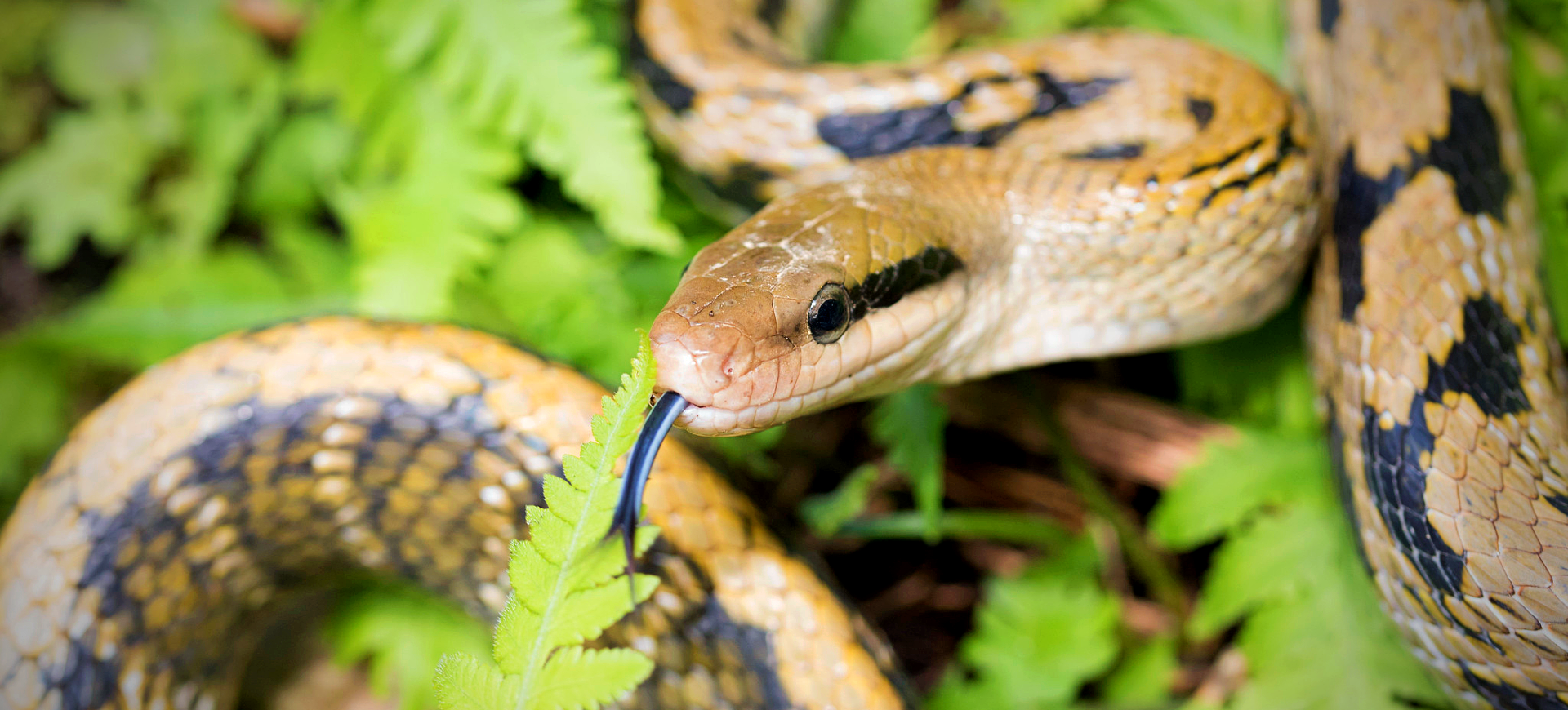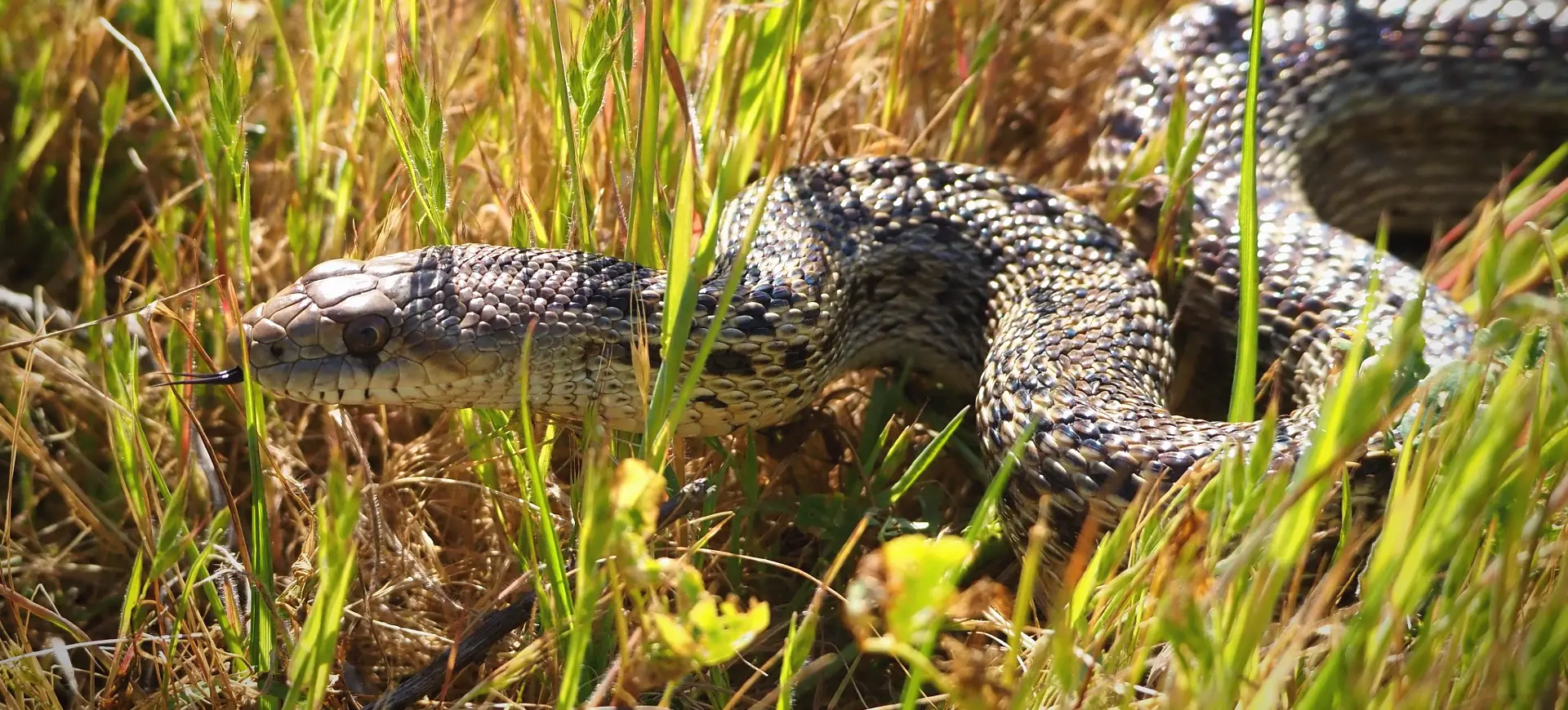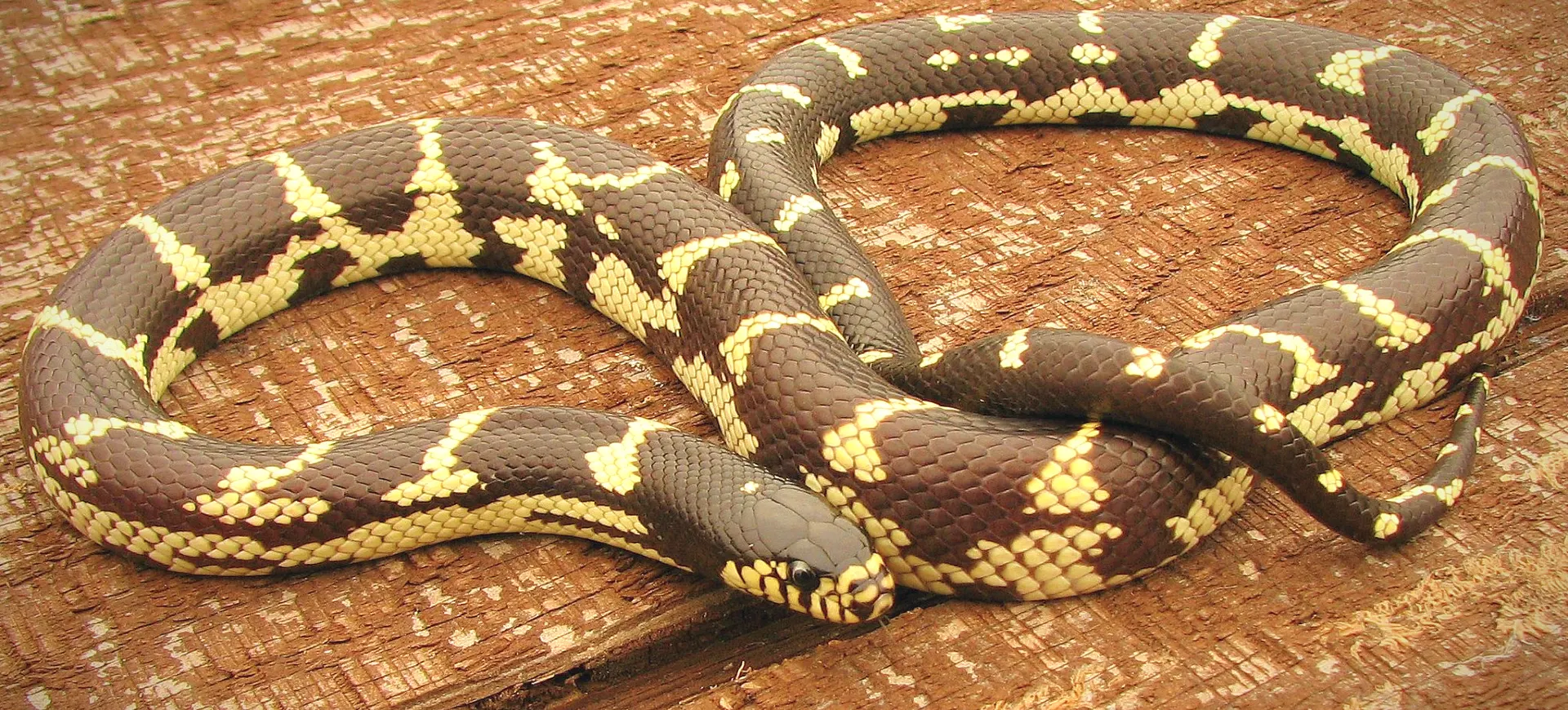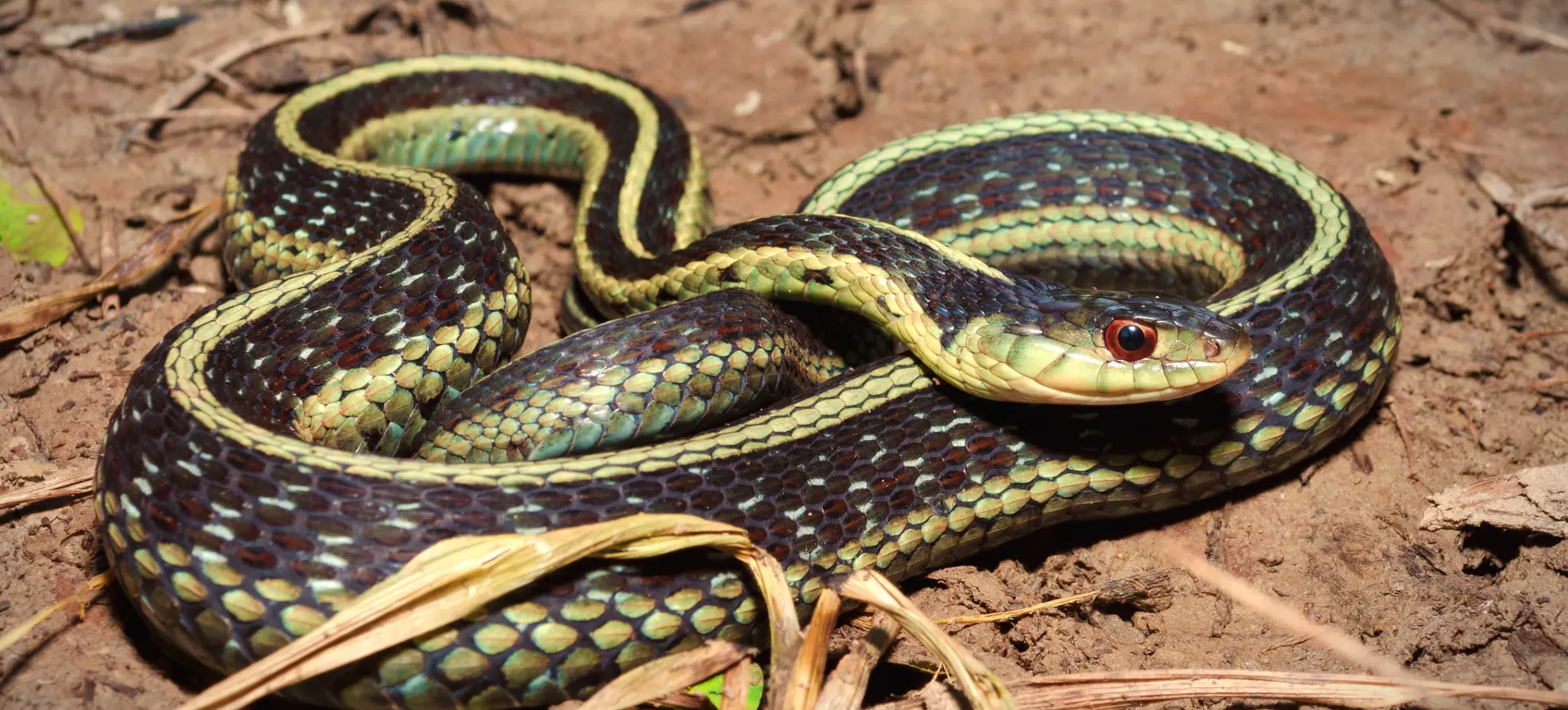Overview
The Western Hognose Snake, known for its distinctive upturned snout, is a small to medium-sized species native to North America. This reptile is highly adaptable, inhabiting regions that range from grasslands to semi-arid environments. They are famous for their defensive behavior, which includes flattening their necks and hissing loudly to mimic more dangerous snakes. When threatened, they often perform a convincing “death display,” rolling onto their backs and playing dead to deter predators.
The coloration of the Western Hognose Snake varies widely, including shades of brown, gray, yellow, and green, which helps them blend into their natural habitats. This species is terrestrial and spends much of its time burrowing in loose, sandy soil, using its snout to dig. They are diurnal, being most active during the day, especially in the morning and late afternoon. In winter, they brumate hibernation to survive the cold temperatures.
Western Hognose Snakes are known for their relatively docile nature, making them popular in the pet trade. Despite their evil status, they are rear-fanged and considered harmless to humans. Their venom is mild and primarily used to subdue prey rather than for defense against predators. This snake’s unique behaviors and appearance have contributed to its popularity among reptile enthusiasts and researchers.
Taxonomy
Kingdom
Phylum
Class
Order
Family
Genus
Species
Sub Species
Type
RANGE
Current distribution:
Today, the Western Hognose Snake is found throughout the Great Plains of North America, extending from Canada into northern Mexico. Their range covers various states in the United States, including Texas, New Mexico, Colorado, Kansas, and Minnesota. This distribution reflects their adaptability to various climates and habitats within the continent.
Despite habitat fragmentation and the pet trade, populations remain robust in many areas, thanks to their adaptability and generalist diet. Conservation efforts and habitat protection are crucial for maintaining these populations, especially in regions where development threatens their native environments. The snake's range has remained relatively stable over the years, with no significant declines reported in most distribution areas.
Physical Description:
Western Hognose Snakes possess a stout body with a distinctly upturned snout used for burrowing and digging in the sand. Adults typically reach lengths of 15 to 33 inches, showcasing a variety of color patterns that serve as camouflage. Their skin is covered in keeled scales, giving it a slightly rough texture. Sexual dimorphism in this species is evident, with females generally being larger than males.
These snakes’ color and pattern variations are significant, often depending on their specific geographic location. Some display dark blotches on a lighter background, while others may be almost uniform. Their belly is usually lighter, ranging from cream to yellow, with or without dark spots. The unique structure of their nose not only aids in digging but also adds to their distinctive appearance, setting them apart from other snake species.

Lifespan: Wild: ~8 Years || Captivity: ~20 Years

Weight: Male: 0.33-0.88 lbs (150-400 g) || Female: 0.55-1.1 lbs (250-500 g)

Length: Male: 14-24 in (35.5-61 cm) || Female: 20-33 in (50.8-83.8 cm)

Top Speed: 4 mph (6.4 km/h)
Characteristic:
Native Habitat:
The Western Hognose Snake inhabits various environments across North America, from southern Canada through the United States to northern Mexico. Preferred habitats include grasslands, semi-arid areas, farmlands, and prairies with abundant loose, sandy soil. These environments provide the necessary conditions for burrowing, a behavior crucial to the snake’s survival and reproductive strategies.
Adaptations to their habitat include a tolerance for various temperature and moisture levels, allowing them to thrive in both dry and moderately humid areas. Their presence in these ecosystems is vital in controlling rodent and amphibian populations. Adapting to different environmental conditions has enabled the Western Hognose Snake to maintain stable populations across a broad geographic range.
Climate Zones:
Biomes:
Biogeographical Realms:
Continents:
Countries:
Diet:
Diet & Feeding Habits:
Western Hognose Snakes are carnivorous, primarily preying on amphibians, reptiles, and small mammals. Their diet includes frogs, toads, lizards, small snakes, and rodents, which they overpower with mild venom. They have a particular immunity to the toxins of toads, which are a significant part of their diet. This adaptation allows them to consume toads without succumbing to the poisons that would deter other predators.
In captivity, their diet can be supplemented with various prey items, including mice, which are readily accepted. Feeding behaviors exhibit flexibility, with these snakes willing to consume live and pre-killed prey. The hognose snake’s upturned snout is useful for digging and assists in uncovering and capturing burrowing prey. Their feeding habits and dietary preferences significantly affect their role in controlling pest populations within their native habitats.
Mating Behavior:
Mating Description:
Western Hognose Snakes exhibit a polygynous mating system, where males may mate with multiple females during the breeding season. Mating occurs in the spring, following their emergence from brumation. Courtship involves the male flicking his tongue on the female’s body and aligning their bodies for copulation. Females lay one clutch of eggs annually, depositing in loose soil or under debris to incubate.
The eggs hatch after approximately 60 days, depending on temperature and humidity. Hatchlings are independent from birth and must fend for themselves, including finding their first meal. This reproductive strategy reflects the harshness of their environment, where survival rates can be low due to predation and environmental factors. The annual cycle of brumation and reproduction is closely tied to the seasonal variations in temperature and daylight hours.
Reproduction Season:
Birth Type:
Pregnancy Duration:
Female Name:
Male Name:
Baby Name:
Social Structure Description:
Western Hognose Snakes are solitary animals, coming together only during the breeding season. They show little interest in social interactions outside of mating, focusing on individual survival strategies such as foraging and burrowing. Their solitary nature is evident in their territorial behavior, with individuals often defending specific areas from others of the same species.
Social interactions are limited, with communication primarily occurring through chemical cues and body language during the mating season. This independence plays a crucial role in their survival, allowing them to exploit a range of habitats without the need for complex social structures. The solitary lifestyle of the Western Hognose Snake reflects the adaptability and resilience that characterize this species.
Groups:
Conservation Status:
Population Trend:
The Western Hognose Snake is currently classified as Least Concern by the IUCN, indicating a stable population across its range. They are common in many areas, benefiting from their adaptability and ability to thrive in varied environments. Despite threats from habitat destruction and the pet trade, these snakes have shown resilience, with many populations remaining robust.
Conservation efforts and monitoring are essential to ensure that this status is maintained, especially in regions where development poses a threat to their habitats. Public education on the ecological role of the Western Hognose Snake can also aid in reducing fear and misunderstanding, promoting a coexistence strategy that benefits both humans and snakes. The continued stability of their populations will depend on the balance between habitat protection and sustainable human development.
Population Threats:
The primary threats to the Western Hognose Snake include habitat loss due to agricultural expansion, urban development, and the pet trade. Habitat fragmentation isolates populations, making it difficult for individuals to find mates and reducing genetic diversity. Additionally, collecting wild specimens for the pet trade can significantly impact local populations, especially when done unsustainably.
Predation by domestic animals and road mortality also contribute to population declines in some areas. Efforts to mitigate these threats include habitat conservation, regulation of the pet trade, and public education campaigns to increase awareness of the species and its role in the ecosystem. Addressing these challenges is crucial for the long-term survival of the Western Hognose Snake in the wild.
Conservation Efforts:
Conservation strategies for the Western Hognose Snake include habitat protection, restoration, and legal regulations to control the pet trade. Educational programs to raise awareness about the snake’s ecological benefits have proven effective in promoting conservation. Research into their habitat requirements and population dynamics is ongoing, providing valuable data for conservation planning.
In some areas, habitat corridors are being established to connect fragmented populations, enhancing genetic diversity and improving resilience. Conservationists also work with local communities to develop coexistence strategies that minimize conflict and protect snake populations. These combined efforts are essential for ensuring the sustainable management of the Western Hognose Snake and the ecosystems they inhabit.
Additional Resources:
Fun Facts
- The Western Hognose Snake’s “hognose” refers to its upturned snout for digging in sandy soils.
- They may play dead when threatened by flipping onto their back and opening their mouth.
- They are immune to toad toxins, allowing them to prey on toads other predators avoid.
- In captivity, they can live up to 20 years, longer than their average lifespan in the wild.
- They are rear-fanged venomous, but their venom is not dangerous to humans.
- Their varied coloration and patterns make them a favorite among reptile enthusiasts.
- Despite their common name, they are unrelated to true hogs or pigs.
- When threatened, the Western Hognose Snake can hiss loudly and flatten its neck in a cobra-like display.
- They can burrow into the ground to escape extreme temperatures or predators.
- This species’ eggs have a relatively long incubation period, requiring about 60 days before hatching.

